Universal Magnet Measuring System UMMS
This digital system combines the entire magnet measurement technology in one device!
The UMMS is the top instrument of the ECKEL product range
Based on the long-standing experience with digital magnet measuring devices the UMMS has been developed to provide the user with maximum performance in all fields of magnet measuring technology.
The UMMS does not only cover the known measurements of the Robograph, it further extends the possibilities in all directions. Extremely hard magnetic materials such as rare earth materials can be measured as well as soft magnetic materials such as transformer sheets. Furthermore, the frequency can be varied from DC to the kHz range and the signal form can be changed as desired.
The digital signal processing of the UMMS offers possibilities that have not yet been available. Suitable algorithms allow for compensation regarding temperature, saturation and eddy current. The manual alignment of the measuring equipment (e.g. J compensation) is not necessary. All mutual inductances for measuring equipment according to IEC 404 are not required
Most of the measurements are performed as hysteresis measurements. The UMMS can also perform any other measurement that involves the generation and/or the measurement of magnetic fields. In addition, any existing measuring device can be connected to the UMMS. The only limitation is the power capacity of the output stage.
To meet this universal approach the UMMS consists of modules that perfectly solve the specific measuring task by their combination and, in particular, through the use of the special measuring and evaluation software.
All components have been specifically developed for this task. The use of devices with the latest technology and ingenious circuitry ensures quality and offers possibilities that cannot be reached by third party circuits. The measurements are carried out in a matter of seconds, they provide extremely accurate results and they are very comfortable for the user. The UMMS with regard to its concept, structure and its results differs from all other magnet measuring instruments. The signal converters and the software are so powerful that they surpass every requirement of any known measuring methods. The evaluation of the measurement is performed on a PC.
The UMMS mainly consists of two devices, as well as the measuring equipment and a PC:
The UMMS Data Unit provides the signal converters, as well as the digital and analogue control of the output stage, and also the link to the PC. The UMMS Data Unit consists of the power supply, motherboard with 10 plug-in slots and a 240×128 pixel graphic display. The motherboard includes an 80MHz signal processor with an own operating system and 1MB RAM. It receives the commands from the PC, controls the functions of all existing plug-in boards, drives the display, prepares the measuring data and transmits the data to the PC where it is evaluated.
Furthermore, the serial interface to the output stage, a high precision reference source and a test generator are integrated in the motherboard. The UMMS Data Unit automatically configures itself to the plug-in boards installed. The Data Unit can also be used without an output stage for passive measurements.
The plug-in boards can be selected to match the required measurements.
The sampling board with 1MHz, 16-bit analogue/digital converter is available in three versions:
- As a universal board with an input range for maximum inputs from +/- 5.3mV to +/- 360V.
- As an energising current or voltage measurement board with an input range of +/- 5.3mV to +/- 2.75V. These boards are directly connected to the output stage.
- As a sensor board with an input range of +/- 5.3mV to +/- 11V. For example, it is meant for connecting Hall probes or temperature sensors. This board contains, in addition, an onboard source that can be digitally controlled. It can be controlled as a current source between 0 and 10mA, or between 0 and 100mA, or as a voltage source between 0 and 10V. This source is symmetric, i.e. it generates equal dimensioned positive and negative voltages. As a result, the sensor output is approximately 0V that guarantees maximum modulation and a perfect common mode rejection ratio.
All sampling boards have differential inputs and are protected against overvoltage. The sampling rate can be freely selected between 38Hz and 1MHz. By repeated, deferred measurements real sampling rates of up to 100MHz can be achieved with AC measurements. Up to 7 sampling boards can be handled simultaneously.
By means of the test generator all sampling boards are synchronised to 2.5ns and fully automatically calibrated by the reference source and also set to zero offset. The sampling board includes 1MB RAM for the storage of measuring data. Up to 524,288 measured values can be recorded by each board during a measurement
The D/A converter board includes a 1MHz 16-bit digital/analogue converter and 1MB RAM for signal storage. It is addressed synchronously with the sampling boards and it generates the control signal for the output stage. The control signal can be created as desired. The output frequency limit can be varied from 3 Hz to 44 kHz.
Various boards are available for data transmission:
- RS 232 board including a serial interface with 19200 up to 921600 bit/s. When using high baud rates above 115200 bit/s it is generally necessary to insert a special interface board into the PC.
- USB board with serial transmission at 12 Mbit/s for connection to the standard USB interface of the PC.
- Parallel board, can be used as parallel interface, IEC bus or 16-bit I/O board for control of external processes.
Up to three of these boards can be used. There is an input board for a digital temperature sensor, an EEPROM for recognising the measuring equipment and a digital sliding calliper.
The UMMS Power Unit is the output stage that provides the energising signal for the generation of the magnetic field. It has a power output of 2000 VA. It can be switched between 100V/20A and 200V/10A. Additionally, it can be operated as a current or voltage source. DC measurements are preferably carried out using the current source.With AC measurements the current source cannot be used as the AC stability cannot be guaranteed for unknown measuring equipment.
However, it is possible to adapt the primary current as well as the secondary voltage to desired shape by adaptive regulation algorithms and thus measurement can be performed e.g. with sinusoidal field H or sinusoidal induction B.
The power bandwidth is 10 kHz. The UMMS Power Unit contains a microcontroller and a graphic display. It is short-circuit-proof, forced-draught cooled, thermally controlled and has an automatic emergency cut off. An offset alignment is automatically performed. The UMMS Power Unit has an EEPROM interface for the read-in of parameters that automatically recognizes the measuring equipment. This EEPROM can also be retrofitted to old measuring equipment. As a result of the recognition of the measuring equipment the correct software will be automatically loaded.
Heatable measuring inserts are required in the special case of measuring hysteresis of rare earth materials. The UMMS Heat Control Unit is then used for the supply and control of the heating. It consists of two separately controllable DC voltage sources, each rated at 700 VA.
The UMMS Heat Control Unit controls the heating of the measuring inserts via surface temperature sensors. As DC sources are used the heating can also be applied during the measurement. This guarantees a constant temperature for the whole duration of the measurement.
The UMMS Heat Control Unit is connected to the Data Unit via the serial interface. The desired temperature is adjustable by software. Thus fully automatic recording of measurement rows over temperature is ossible.
To connect a measuring system to several equipments the UMMS Switch Unit is used. Thus four measuring equipments can be used alternately without changing cables and plugs.
Manual or automatic switching by PC at selecting the appropriate measurement is possible. All relay positions can be programmed separately on the PC, e.g. to allow one temperature sensor to be used for several equipments. Additionally it is possible to add name and icon to every switching position.
The measuring equipment can be usually chosen as desired. Only the required field strength must be reached at the given frequency with the performance data of the Power Unit. Electromagnet measuring yokes (heatable to 170 °C by the Heat Control Unit) for the DC measurement of hard magnetic materials, or single sheet testers, Epstein frames or permeameters for the AC measurement of soft magnetic materials are common. These setups are described in, for example, the IEC 404 standards.
The PC normally is provided by the customer. A modern standard type PC with high performance should be used to obtain fast evaluations. A CD ROM drive is required. The UMMS software can run with Windows from 95 to Vista (32 bit). A windows version from 98 or 2000 up is recommended to connect the Data Unit by USB. The monitor should provide a minimum resolution of 1024×768 pixels whereby the user panel can be resized as desired. A LCD monitor is recommended since it is not harmed by magnetic fields. Optionally, a printer may be required.
The software includes, as well as the basis software, the modules for the measurements ordered. The following measurements are possible:
- Hysteresis measurements (B + J) of hard ferrite to soft iron, from DC to higher frequencies, including the calculation of Br, BHC, JHC, µr, specific and absolute losses (hysteresis and eddy current), apparent power and reactive power, e.g. all IEC 404 measurements.
- Demagnetisation curves of rare earth materials
- Hysteresis measurements of rare earth materials in combination with the Heat Control Unit
- Temperature coefficients of hard magnetic materials in combination with the Heat Control Unit
- Flux hysteresis measurements of ferrite materials according to Bosch standard
- Commutation curves (measured in one run).
- Passing through of partial hysteresis, magnet calibrations (specific demagnetisation).
- Frequency response, spectral analysis, total harmonic distortion, intermodulation, also measured in direct sequence with a three-dimensional presentation, effectiveness of transformers.
- Measurements with motors and ignition coils while in operation
- Temporal, thermal and local variations
Any other measurement that allows for an appropriate setup of measuring equipment can be programmed according to customer-specific requirements.
The excitation of the Power Unit is freely programmable, e.g. DC, quasi DC, sinusoidal 0 to 10 kHz, square-wave, trapezoidal, saw tooth etc. The signal form can be defined via keyboard (e.g. pulse width modulation) or can be graphically designed, read from files (e.g. Excel) or directly measured (e.g. current measurement with running motor).
When current source excitation is applied, the signal form is limited by the inductance of the measuring equipment.
Comprehensive calibration routines allow for self-calibration, optimal modulation and maximum speed.
Back-coupled functions with dB/dt, dΦ/dt or dH/dt = constant are available for DC measurements. These functions can be simulated for AC measurements.
The software offers the following display features:
- Display of B- and J-Hysteresis
- Display of the origin signals like primary current, primary voltage, secondary voltage
- Export of the results as Excel file
- Selection of the results to be displayed
- Tolerance check for selectable results
- Export of the print as Windows metafile
- Complete user definable print layout
- Self test functions
- Very comprehensive configuration setup
- Online help
The installation of the UMMS includes an on-site introduction. The price includes a 2 year guarantee on hardware devices and a 10 year service guarantee.

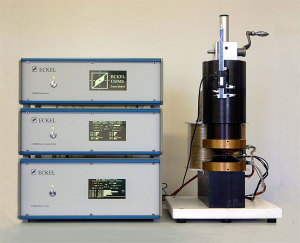
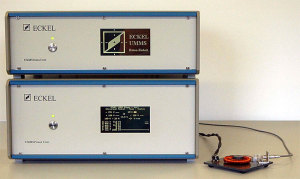
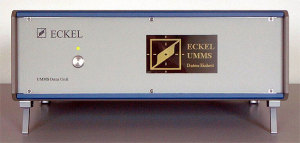
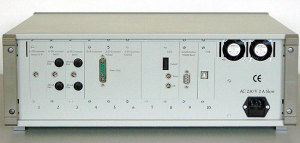
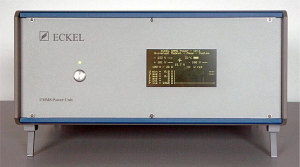
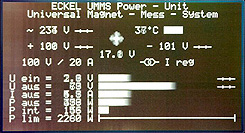
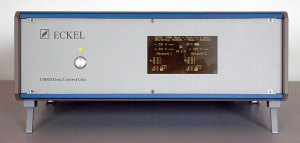

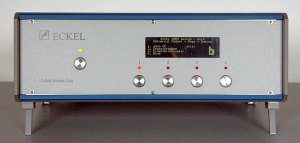

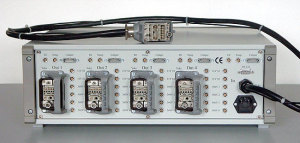
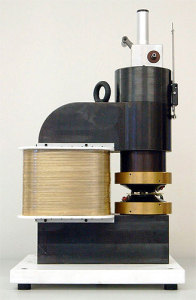
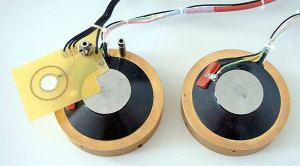
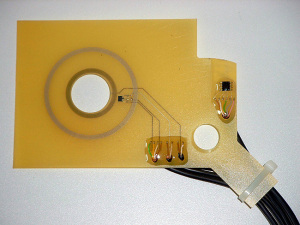
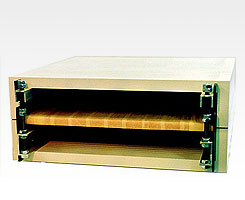

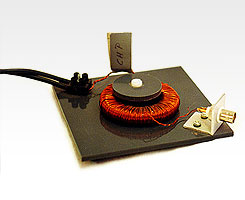
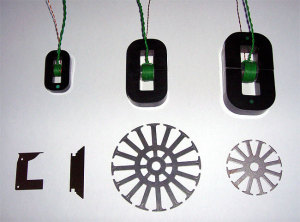
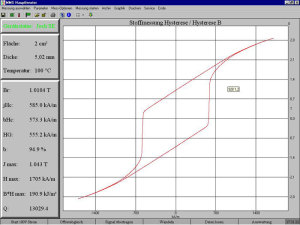
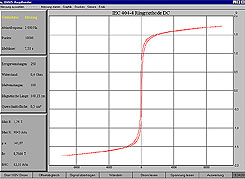
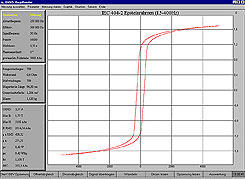
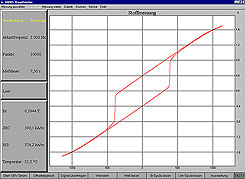
 Deutsch
Deutsch English
English
